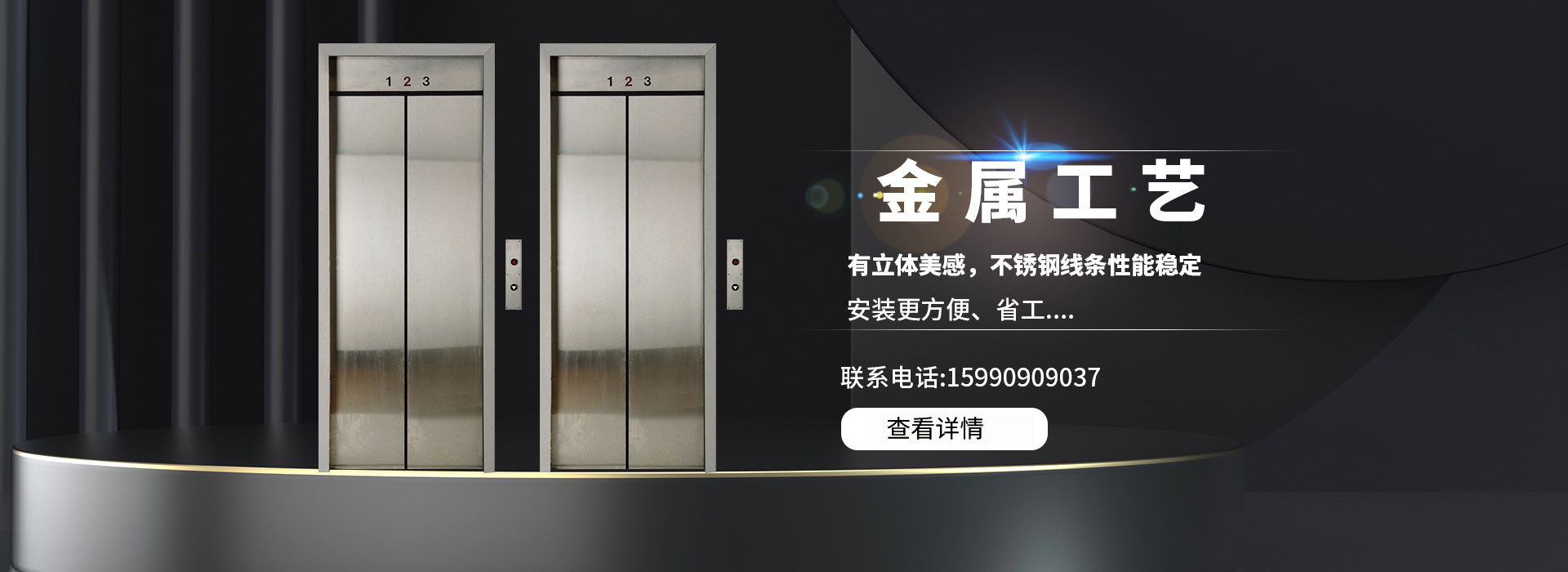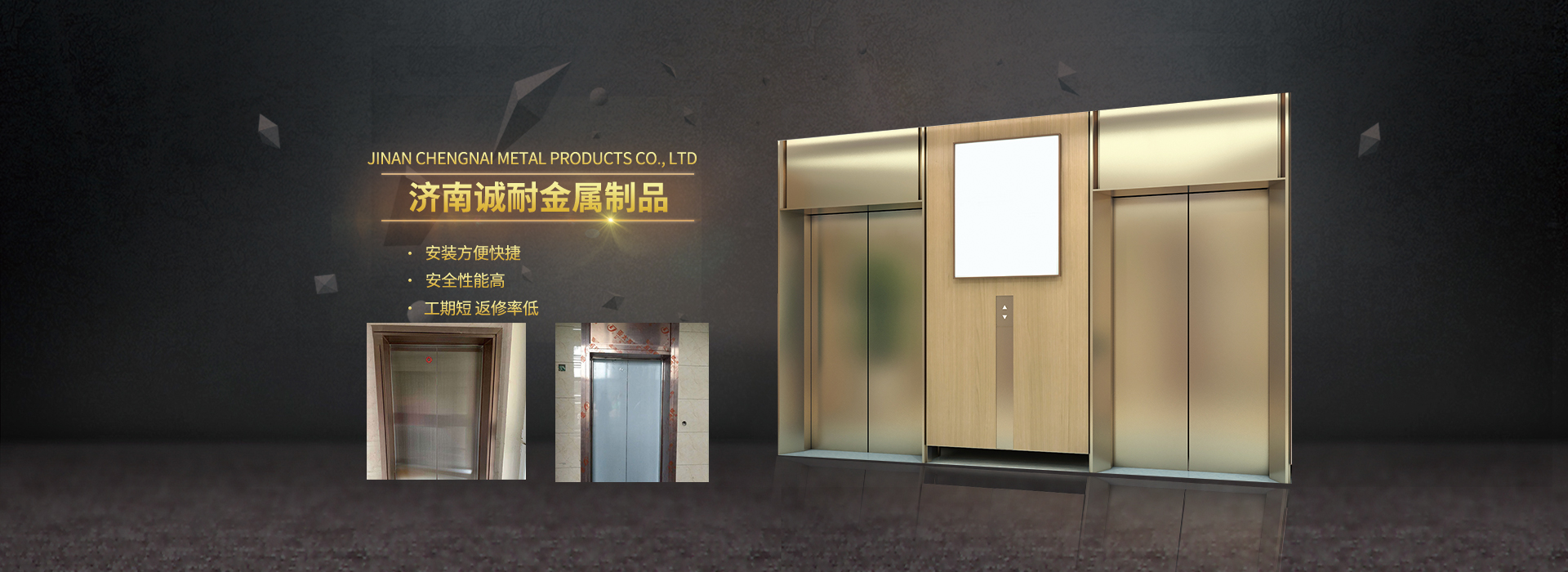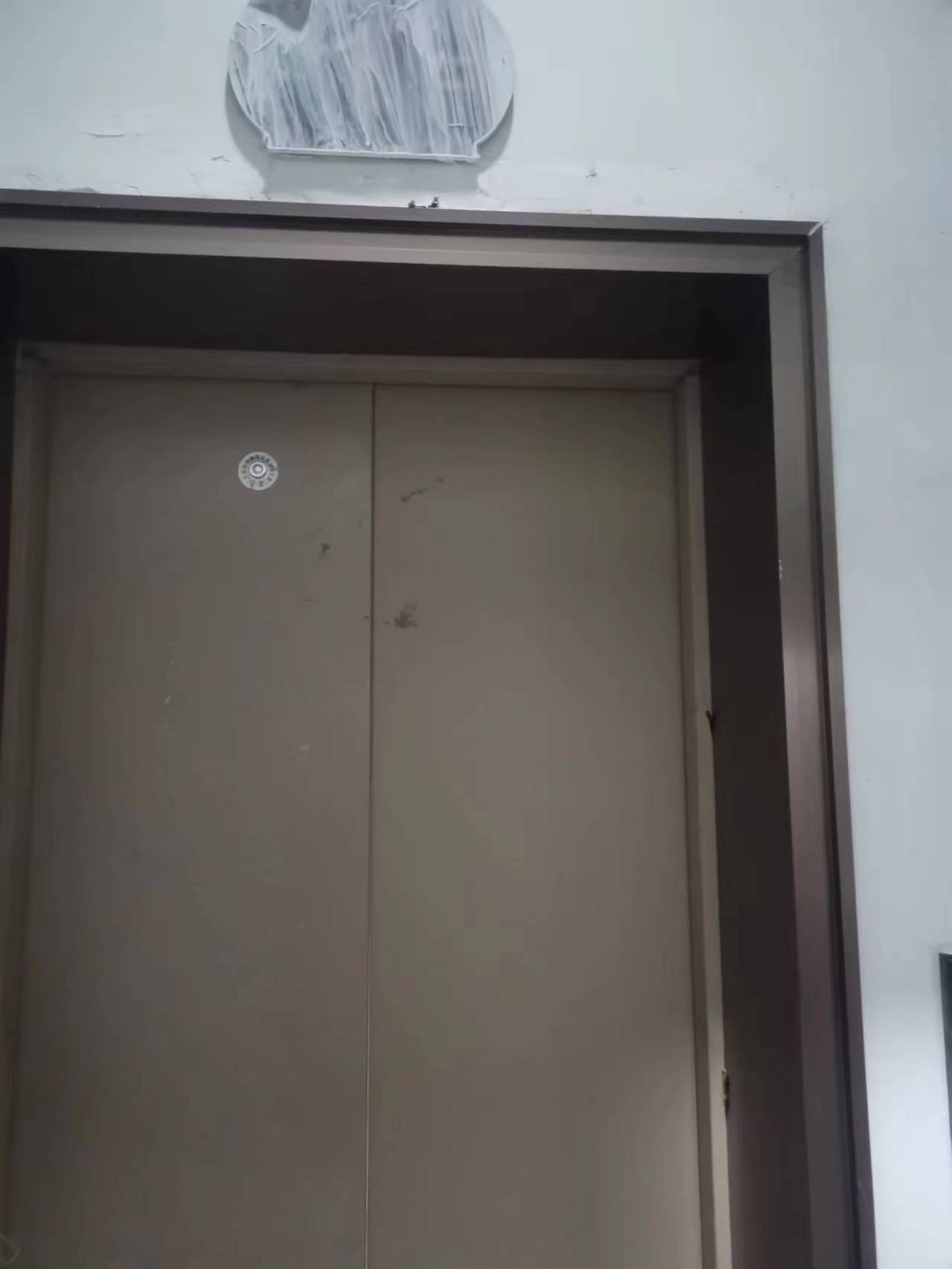濱州不銹鋼電梯門套:不銹鋼電梯門套有那幾種?
一、不銹鋼是什么鋼
1、 What is stainless steel
不銹鋼是鋼的一個種類,鋼是指含有碳(C)量在2%以下的稱之為鋼,大于2%是鐵。鋼在冶煉過程中加入鉻(Cr)、鎳(Ni)、錳(Mn)、硅(Si)、鈦(Ti)、鉬(Mo)等合金元素改善了鋼的性能使鋼具有了耐腐性(即不上銹)就是我們常說的不銹鋼。
Stainless steel is a type of steel, which refers to steel containing less than 2% carbon (C) and more than 2% iron. Adding alloying elements such as chromium (Cr), nickel (Ni), manganese (Mn), silicon (Si), titanium (Ti), molybdenum (Mo), etc. during the smelting process improves the properties of steel and gives it corrosion resistance (i.e. no rust), which is commonly known as stainless steel.

二、為什么不銹鋼有不同的鋼號
2、 Why are there different grades of stainless steel
不銹鋼通常被分為201、202、301、304、309s、310s、410、420、431等多種型號。其中,201、202、301、304、309s、310s屬于奧氏體不銹鋼,不含有磁性,可耐多種介質腐蝕。410、420、431則屬于馬氏體不銹鋼,具有磁性、強度高,但塑性和可焊性較差。其中硫磷含量是一很重要指標,碳素結構鋼和碳素結構鋼就是根據它劃分的:硫,磷含量皆不超過0.04%的鋼,稱為鋼;硫含量不超過0.03%,磷含量不超過0.035%的鋼稱為鋼;硫磷含量各不超過0.025%的鋼稱為特級質量鋼。
Stainless steel is usually divided into various types such as 201, 202, 301, 304, 309s, 310s, 410, 420, 431, etc. Among them, 201, 202, 301, 304, 309s, and 310s belong to austenitic stainless steel, which does not contain magnetism and can withstand corrosion from various media. 410, 420, and 431 belong to martensitic stainless steel, which has magnetism and high strength, but poor plasticity and weldability. The sulfur and phosphorus content is an important indicator, and carbon structural steel and high-quality carbon structural steel are classified based on it: steel with sulfur and phosphorus content not exceeding 0.04% is called high-quality steel; Steel with sulfur content not exceeding 0.03% and phosphorus content not exceeding 0.035% is called high-grade high-quality steel; Steel with sulfur and phosphorus content not exceeding 0.025% is called premium quality steel.
不銹鋼在冶煉過程當中,由于加入合金元素品種不同,不同品種加入量的不同。其特性也是不同的,為了加以區別則冠上了不同的鋼號,下面是常見裝飾用不銹鋼不同鋼號“合金元素”含量表僅供參考:200系列:鉻-鎳-錳奧氏體不銹鋼300系列:鉻-鎳奧氏體不銹鋼301:延展性好,用于成型產品。也可通過機速硬化。焊接性好。抗磨性和疲勞強度優于304不銹鋼。302:耐腐蝕性同304,由于含碳相對要高因而強度更好。302B:是一種含硅量較高的不銹鋼,它具有較高的抗高溫氧化性能。303:通過添加少量的硫、磷使其較削加工。303Se:也用于制作需要熱鐓的機件,因為在這類條件下,這種不銹鋼具有良好的可熱加工性。304:即18/8不銹鋼。GB牌號為0Cr18Ni9。309:較之304有更好的耐溫性。
During the smelting process of stainless steel, the amount of alloying elements added varies depending on the type of alloy element added. Their characteristics are also different, and in order to distinguish them, different steel grades are labeled. The following is a table of "alloy element" content for common decorative stainless steels of different steel grades for reference only: 200 series: chromium nickel manganese austenitic stainless steel 300 series: chromium nickel austenitic stainless steel 301: good ductility, used for forming products. It can also be hardened by machine speed. Good weldability. Wear resistance and fatigue strength are superior to 304 stainless steel. 302: Corrosion resistance is the same as 304, and its strength is better due to its relatively higher carbon content. 302B: It is a stainless steel with a high silicon content, which has high resistance to high temperature oxidation. 303: By adding a small amount of sulfur and phosphorus, it can be processed more efficiently. 303Se: It is also used to make parts that require hot forging, as this stainless steel has good hot workability under such conditions. 304: 18/8 stainless steel. The GB grade is 0Cr18Ni9. 309: Compared to 304, it has better temperature resistance.
304L:是碳含量較低的304不銹鋼的變種,用于需要焊接的場合。較低的碳含量使得在靠近焊縫的熱影響區中所析出的碳化物減少,而碳化物的析出可能導致不銹鋼在某些環境中產生晶間腐蝕(焊接侵蝕)。304N:是一種含氮的不銹鋼,加氮是為了提高鋼的強度。
304L: It is a variant of 304 stainless steel with lower carbon content, used for welding applications. The lower carbon content minimizes the precipitation of carbides in the heat affected zone near the weld, which may lead to intergranular corrosion (welding erosion) of stainless steel in certain environments. 304N: It is a nitrogen-containing stainless steel, and nitrogen is added to improve the strength of the steel.
三、電梯門套常用的不銹鋼有那種及區別
3、 What are the commonly used stainless steels for elevator door frames and their differences
被用于電梯門套的不銹鋼主要有201不銹鋼與304不銹鋼以及復合不銹鋼三種。
There are mainly three types of stainless steel used for elevator door frames: 201 stainless steel, 304 stainless steel, and composite stainless steel.
主要區別:1、成分:由于其成本不同,不同。304質量好一些,同時相對較貴;201相對差一些,但有一定優勢;復合不銹鋼介于兩者之間。
Main difference: 1. Ingredients: Due to their different costs, prices vary. 304 has better quality but relatively higher price; 201 is relatively inferior, but has a certain advantage in price; Composite stainless steel is between the two.
2、組成:201組成為17Cr-4.5Ni-6Mn-N,是節Ni鋼種,301鋼的替代鋼。經冷加工后具有磁性,用于鐵路車輛。 304組成為18Cr-9Ni,是得到廣泛應用的不銹鋼、耐熱鋼。用于食品生產設備、昔通化工設備、核能等。? ?復合不銹鋼為304不銹鋼薄板和鍍鋅板加熱到200℃,通過中間介質高分子膜貼合而成,產品結構緊密,具有減震、降噪、強度高等優點,由于厚度較厚,用于電梯轎廂、廳門、轎門等。
2. Composition: 201 is composed of 17Cr-4.5Ni-6Mn-N, which is a type of Ni steel and a substitute for 301 steel. After cold processing, it has magnetism and is used for railway vehicles. The composition of 304 is 18Cr-9Ni, which is the most widely used stainless steel and heat-resistant steel. Used for food production equipment, Xitong chemical equipment, nuclear energy, etc? Composite stainless steel is made by heating 304 stainless steel sheet and galvanized sheet to 200 ℃, and bonding them together through an intermediate medium polymer film. The product has a tight structure and advantages such as shock absorption, noise reduction, and high strength. Due to its thick thickness, it is used for elevator cars, hall doors, car doors, etc.
3、201是含錳較高,表面很亮帶有暗黑的亮,含錳較高容易生銹。304含鉻較多,表面呈現啞光,不生銹.兩種放在一起就有比較了。重要的就是耐腐蝕性能不同,201的耐腐蝕性能很差,所以就要便宜很多.又因為201含鎳低,所以比304的低,于是耐腐蝕性能就不如304的了。復合不銹鋼表面由304組成,表面具有304不銹鋼的特性。
3. 201 has a high manganese content, with a bright and dark surface, and is prone to rusting due to its high manganese content. 304 contains a lot of chromium, with a matte surface and no rusting. The two types can be compared together. The most important thing is that the corrosion resistance is different. 201 has poor corrosion resistance, so the price is much cheaper. Also, because 201 contains low nickel, the price is lower than 304, so the corrosion resistance is not as good as 304. The surface of composite stainless steel is composed of 304 and has the characteristics of 304 stainless steel.
4、201不銹鋼在特定環境下會生銹,譬如說放置于鹽水浸泡就會生銹,但是日常環境下是極不易生銹的。不銹鋼材質是因為含有鎳元素,才有不易生銹的能力,而相較于304不銹鋼來說,201不銹鋼中的鎳元素會更少,因此要比304不銹鋼更容易生銹。復合不銹鋼的表面材質為304不銹鋼,而生銹主要表層氧化,因此復合不銹鋼抗銹蝕能力優于201不銹鋼。
4. 201 stainless steel will rust in specific environments, such as soaking in salt water, but it is extremely difficult to rust in daily environments. Stainless steel material has the ability to resist rusting due to its nickel content, and compared to 304 stainless steel, 201 stainless steel contains less nickel, making it more prone to rusting. The surface material of composite stainless steel is 304 stainless steel, and rust is mainly caused by surface oxidation, so the corrosion resistance of composite stainless steel is better than that of 201 stainless steel.
不銹鋼具有抵抗大氣氧化的能力——即不銹性,同時也具有在含酸、堿、鹽的介質中乃腐蝕的能力——即耐蝕性。但其抗腐蝕能力的大小是 隨其鋼質本身化學組成、加護狀態、使用條件及環境介質類型而改變的。如304鋼管,在干燥清潔的大氣中,有優良的抗銹蝕能力,但將它移到海濱地區,在含有大量鹽份的海霧中,很快就會生銹了;而316鋼管則表現良好。因此,不是任何一種不銹鋼,在任何環境下都能耐腐蝕、不生銹的。
Stainless steel has the ability to resist atmospheric oxidation, that is, stainless steel, and also has the ability to corrode in media containing acid, alkali, and salt, that is, corrosion resistance. But the magnitude of its corrosion resistance varies with the chemical composition of the steel itself, the state of protection, the conditions of use, and the type of environmental medium. Like 304 steel pipe, it has absolutely excellent corrosion resistance in dry and clean atmosphere, but when moved to coastal areas, it will quickly rust in sea fog containing a large amount of salt; And 316 steel pipes perform well. Therefore, not any type of stainless steel can resist corrosion and rust in any environment.
當不銹鋼管表面出現褐色銹斑(點)的時候,人們大感驚奇:認為 “不銹鋼是不生銹的,生銹就不是不銹鋼了,可能是鋼質出現了問題”。其實,這是對不銹鋼缺乏了解的一種片面的錯誤看法。不銹鋼在一定的條件下也會生銹的。
When brown rust spots (dots) appear on the surface of stainless steel pipes, people are greatly surprised: they believe that "stainless steel does not rust, and if it rusts, it is not stainless steel anymore. It may be a problem with the steel. In fact, this is a one-sided misconception about the lack of understanding of stainless steel. Stainless steel can also rust under certain conditions.
本文由濟南誠耐金屬制品有限公司友情奉獻.更多有關的知識請點擊:http://m.59xiaohaha.cn/真誠的態度.為您提供為的服務.更多有關的知識我們將會陸續向大家奉獻.敬請期待.
This article is a friendly contribution from Jinan Chengnai Metal Products Co., Ltd. For more related knowledge, please click: http://m.59xiaohaha.cn/ Sincere attitude. We provide you with comprehensive services. We will gradually contribute more relevant knowledge to everyone. Please stay tuned






